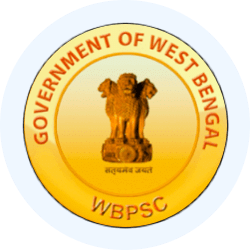WBCS (West Bengal) Exam > WBCS (West Bengal) Notes > WBCS Preparation: All Subjects > Municipal Governance (Urban Local Bodies)
Municipal Governance (Urban Local Bodies) | WBCS Preparation: All Subjects - WBCS (West Bengal) PDF Download
Municipal Governance (Urban Local Bodies)
Municipalities are established by the State Government, taking into account public opinion in the respective areas. The division of municipal regions into wards is primarily based on population size, with each ward electing a representative directly. Women are allocated one-third of the total seats, while proportional reservation is made for marginalized sections such as Scheduled Castes (SC) and Scheduled Tribes (ST). Elected by the public, councillors govern municipalities, and elections are conducted every 5 years under the oversight of the State Election Commission. Mayors/Chairpersons are directly elected by councillors.
Constitution of Municipal Governance
The West Bengal Municipal Act, 1993 outlines criteria for constituting municipal areas, with possible relaxations for notified areas. Criteria include a population of at least 30,000, a population density not less than 750 inhabitants per sq km, half the adult population engaged in non-agricultural pursuits, and adequate income for municipal functions.
Municipal governance in the state is categorized into Municipal Corporations for large cities and Municipalities for smaller ones.
Municipal Corporation
A Municipal Corparation is the legal term for a local governing body including cities, towns, townships, charter townships, villages and boroughs. In West Bengal, Municipal Corporations are formed by the Municipal Corporation Act, 1980. The Municipal Corporations are established in big cities that have large populations. These corporations have elections once in 5 years where the mayor and his council members are chosen by the people. The mayor has the power to access all records of the corporation, issue directions to the Commissioner and call for reports.
In West Bengal, there are 7 Municipal Corporations. Kolkata, the state capital and a metropolitan city, is managed by Kolkata Municipal Corporation (KMC). Bidhannagar is managed by Bidhannagar Municipality. Chandannagar that was a French colony during British rule has now a Municipal Corporation. Siliguri which is an important railway junction and the gateway to North-East is managed by Siliguri Municipal Corporation.
Howrah, Asansol and Durgapur have other Municipal Corporations of West Bengal. Municipal Affairs of the State was administered by the Bengal Municipal Act, 1993. Later, the West Bengal Municipal Act, 1993 has been enacted on 13th July, 1994 by replacing the Bengal Municipal Act, 1932.
- Municipalities
Municipalities handle the local self-government of towns and small cities. North 24 Parganas has the highest number of Municipalities, with areas like Raniganj, Asansol, and Durgapur falling under Bardhaman district. Darjeeling, Kurseong, Kalimpong, and Mirik host municipalities in Darjeeling district, while Haldia's dockyard is in East Midnapore. Municipalities like Diamond Harbour and Budge Budge are situated in South 24 Parganas. The region also includes one cantonment, Barrackpore cantonment, and 252 census towns.
The document Municipal Governance (Urban Local Bodies) | WBCS Preparation: All Subjects - WBCS (West Bengal) is a part of the WBCS (West Bengal) Course WBCS Preparation: All Subjects.
All you need of WBCS (West Bengal) at this link: WBCS (West Bengal)
|
79 videos|109 docs
|
FAQs on Municipal Governance (Urban Local Bodies) - WBCS Preparation: All Subjects - WBCS (West Bengal)
| 1. What is municipal governance and what are urban local bodies? |  |
Ans. Municipal governance refers to the administration and management of a city or town by a local government body. Urban local bodies, also known as municipal corporations or urban municipalities, are the institutions responsible for governing and providing various services in urban areas, such as water supply, sanitation, roads, and public health.
| 2. What is the significance of municipal governance in West Bengal? |  |
Ans. Municipal governance plays a crucial role in West Bengal as it ensures effective and efficient delivery of essential services to the urban population. It helps in the development and maintenance of infrastructure, promoting urban planning, and addressing the needs and concerns of the residents. Municipal governance also fosters citizen participation and provides a platform for local decision-making.
| 3. What is the West Bengal Civil Service (WBCS) exam and how does it relate to municipal governance? |  |
Ans. The West Bengal Civil Service (WBCS) exam is a competitive examination conducted by the West Bengal Public Service Commission (WBPSC) to recruit candidates for various administrative positions in the state government. The exam includes a specific paper on Local Bodies, Planning, and Urban Development, which covers topics related to municipal governance, urban local bodies, and urban planning.
| 4. What are the functions and responsibilities of urban local bodies in West Bengal? |  |
Ans. Urban local bodies in West Bengal have several functions and responsibilities, including the provision of basic services such as water supply, sanitation, solid waste management, and street lighting. They also undertake urban planning, issue building permits, regulate land use, and maintain public amenities like parks and markets. Additionally, they are responsible for revenue generation through property taxes and other sources.
| 5. How can citizens participate in municipal governance in West Bengal? |  |
Ans. Citizens can actively participate in municipal governance in West Bengal through various means. They can attend public meetings and ward committee meetings to voice their concerns and suggestions. They can also join resident welfare associations or local community groups to collectively address issues and collaborate with the urban local bodies. Additionally, citizens can provide feedback, complaints, and suggestions through online portals or helplines established by the local bodies.
Related Searches















